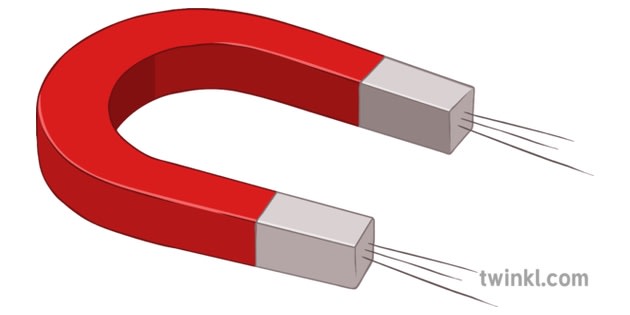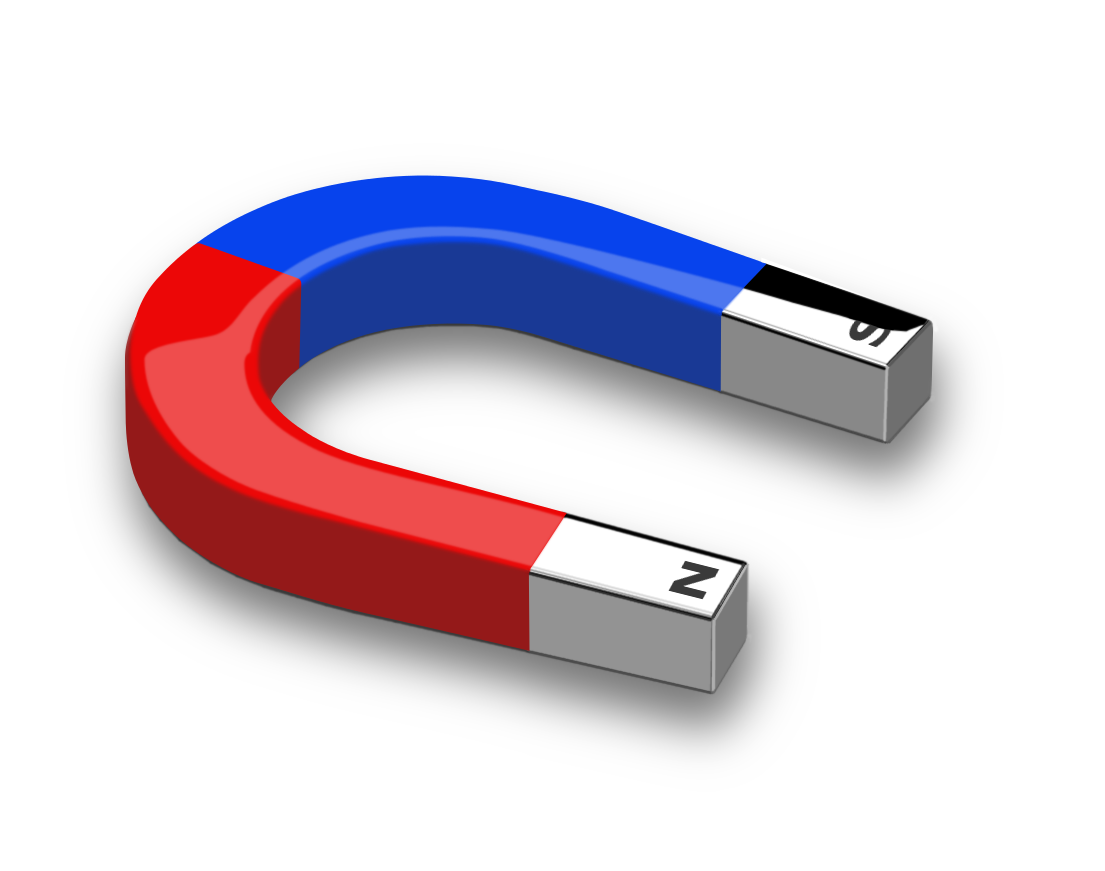Sometimes, you know, things happen that make you think a bit about how different parts of our world connect. We often hear about "magnet" programs in schools, which offer unique ways for students to learn, and then there are "magnet" links, which are a common way people get things online. It's almost as if these two very different ideas share a name, and in some respects, they both involve drawing things in, whether it's bright young minds or digital files.
You might wonder, for instance, what makes a school program so special that it earns national praise, or perhaps you've been frustrated by a download that just wouldn't budge. These everyday occurrences, which we could, in a way, call "magnet incidents," show us how these concepts play out in our daily routines. We're going to look into some of these situations, from how schools achieve top honors to why your online downloads might sometimes hit a snag.
So, we'll talk about how certain school systems have really shined, earning lots of recognition for their special offerings. Then, we'll shift gears a little and chat about those digital connections, the ones that help us get files, and why they sometimes don't work as smoothly as we'd like. It’s pretty interesting, really, how a single word can mean so much in such different contexts.
- What Does Judge Jeanines Daughter Do
- Icarly Gibby
- Lisa Joyner
- Why Did Shemar Moore Leave Criminal Minds
- April 21 Zodiac
Table of Contents
- What Makes Magnet Schools Stand Out?
- How Does One Join a Magnet Program?
- What Happens When Downloads Are Slow?
- What Exactly Is a Magnet Link?
What Makes Magnet Schools Stand Out?
When we talk about special school programs, those often called "magnet" schools really do something different. They are places that draw in students because they offer a particular kind of learning, something you might not find everywhere else. It could be a focus on science, or perhaps the performing arts, or even something about a particular way of thinking. The idea, basically, is to give families more options beyond just the local school that's assigned to their area. This allows parents to pick a place that truly fits what their child needs, or what they believe is a good way for their child to learn and grow. It's about having a say in where your child spends their school days, which is pretty important to many folks.
These schools, you know, often have a specific theme or an approach to teaching that sets them apart. They aren't just regular schools with a different name; they truly offer something unique. For example, a school might concentrate on preparing students for careers in technology, or maybe it's all about fostering creativity through music and theater. This distinct focus is what makes them so attractive, pulling in students who are especially interested in those subjects. It's a way to make sure that learning feels more personal and connected to what a student loves doing, which can make a big difference in how well they do and how much they enjoy their time at school. It's a rather thoughtful way to approach education, giving everyone a chance to find their niche.
A National Success Story- The Magnet School "Incident" of Recognition
It's quite something when a group of schools, a district, really, gets noticed for doing an outstanding job. We've seen situations where a particular school system has earned more national honors for its special programs than any other district in the entire country. That's a big deal, actually. It means they're doing something very right, something that stands out on a large scale. This kind of success, you know, doesn't just happen by chance; it comes from a lot of hard work, good planning, and a clear vision for what these programs should offer to young people. It reflects a dedication to providing varied and high-quality educational paths.
- Why Is Ynw Melly In Jail
- Biscuit Party
- Derek Criminal Minds
- Tv Shows With Kelly Kapowski
- Does Michael B Jordan Have Kids
This level of recognition, you know, for a "magnet incident" of excellence, speaks volumes about the quality of the teaching, the support for students, and the way these programs are put together. It suggests that they are truly meeting the needs of students and families, giving them opportunities that might not be available otherwise. When a district consistently earns these kinds of awards, it builds a reputation for being a place where special learning opportunities truly thrive. It’s a testament to how well they are able to attract and keep students engaged in specific areas of study, making sure they get a really good experience that helps them later in life. It's really quite a noteworthy achievement.
How Does One Join a Magnet Program?
So, you might be thinking, if these programs are so good, how does someone actually get in? Well, the way to join these special school programs has a few steps, and it's pretty clear about what's needed. Each program, you know, has its own set of things you need to meet to even be considered. This isn't just a general rule; it's specific to each different offering. For example, a science-focused program might look for certain grades in math, while a performing arts one might require an audition or a portfolio of work. It’s all about making sure that the students who apply are a good fit for what the program aims to teach, and that they have a fair chance to show what they can do. This process helps to ensure that the right students end up in the right places.
The system for getting into these programs, you know, takes into account what each specific program asks for. It's not a one-size-fits-all situation. You have to look at the exact things that are required for the program your child is interested in. This could mean looking at academic records, or perhaps a student's particular interests, or even their skills in a certain area. The whole point is to make the process as straightforward as possible, so families know exactly what they need to do to apply. It’s a way to manage interest in these often popular programs, and to make sure that the selection is done fairly, which is something families really appreciate, as a matter of fact.
The Application Path- A Look at the Magnet School "Incident" Process
Once you understand what's needed, the next step is actually going through the application process itself. For most of these programs, except for those really specific visual and performing arts schools, the way students get chosen is by a sort of lottery. What happens, basically, is that if your child meets all the things they need to be considered, their name goes into a pool. Then, from that group of eligible children, names are picked at random. This method, you know, helps to make the selection fair for everyone who qualifies, giving every eligible applicant an equal shot at getting a spot. It takes away any sort of personal preference in who gets in, making it a very transparent way of doing things.
This random drawing, or this "magnet incident" of selection, is a common way to handle high demand for these special school programs. It means that even if a lot of people want to join a particular program, everyone who meets the basic requirements has a chance. It’s a pretty straightforward approach, actually, designed to be as unbiased as possible. Of course, for those visual and performing arts programs, it's a bit different because they need to see specific talents. But for most others, it's about putting your name in and seeing if it gets picked. It’s a system that, in a way, balances popular interest with a fair method of choosing who gets to participate in these unique educational offerings.
What Happens When Downloads Are Slow?
Now, let's shift gears a bit and talk about a different kind of "magnet" experience, one that happens on your computer. If you've ever tried to get files using something called BT download, you might have run into a common problem: things just don't move very fast. It's really frustrating, you know, when you're waiting for something to come through, and it seems to take forever. This "magnet incident" of slow speed can turn what should be a quick process into a test of patience. It’s a situation many people face, and it often leaves them wondering why their internet connection seems to be dragging its feet when it comes to these specific kinds of downloads. It’s a pretty common issue, actually, that can really put a damper on your online activities.
When your downloads are moving at a snail's pace, it's pretty annoying, right? You might have a good internet plan, and everything else seems to load quickly, but then you try to get something using a BT link, and it just crawls. This can happen for a bunch of reasons, like not enough people sharing the file, or maybe your own settings aren't quite right. The main thing is that it stops you from getting what you want in a timely way. It's a common point of frustration for folks who rely on these types of links for their digital content. Understanding why this happens is the first step to making your online experience a little smoother, and perhaps less irritating, too.
Tackling the Speed "Incident"- Getting Your Files Faster
Luckily, there are tools that can help with this "magnet incident" of slow downloads. One program, called qBittorrent, is a really good example. It's a piece of software that's free to use and anyone can look at how it's built, which is great. It works on computers that run Windows, Mac, or Linux, so it's pretty widely available. This tool is actually quite capable when it comes to handling those magnet links and other download types. It's designed to make the process of getting files much simpler and, ideally, quicker. It gives you a lot of control over your downloads, which can be super helpful when you're trying to figure out why things aren't moving as fast as they should be. It's a popular choice for a reason, you know.
With qBittorrent, you have a better chance of dealing with those frustrating slow download times. The program itself is very strong and offers many features that can help you manage your files. It’s like having a reliable helper for all your digital fetching tasks. While using BT downloads can sometimes lead to that common issue of things not moving quickly, having a tool like qBittorrent can make a big difference. It helps you organize what you're getting and can even provide insights into why a download might be stuck. It's a pretty handy piece of software for anyone who regularly uses magnet links, offering a way to smooth out some of those bumpy "magnet incident" moments, basically.
What Exactly Is a Magnet Link?
You hear about "magnet links" all the time when talking about getting files online, but what are they, really? It’s pretty simple once you break it down. A magnet link is a special kind of web address that doesn't point directly to a file on a server. Instead, it holds information that helps your computer find the file on other people's computers who are sharing it. Think of it like a set of instructions rather than a direct path. This is why they're called "magnet" links; they sort of pull in the information needed to locate the actual data. It’s a clever way to share things without needing a central place to store everything, which is pretty neat, if you ask me.
The main idea behind a magnet link is to be very flexible and to make sharing easier. It's not like a regular link that goes straight to a picture or a document. Instead, it contains a unique identifier for the content itself. This means that even if the original source of the file disappears, as long as someone else out there has a copy and is sharing it, the magnet link can still find it. This makes them pretty resilient, which is a good thing for long-term sharing of digital content. It's a way to keep things accessible, even when the internet is, you know, constantly changing and evolving.
Unpacking the Code- The Magnet Link "Incident" Explained
Let's take a closer look at what one of these magnet links actually contains, like breaking down a little code "incident." A typical magnet link starts with "magnet:", which is the name of the protocol, telling your computer what kind of link it is. Then you'll often see "xt:", which is a short way of saying "exact topic." This part points to where the resource is located, sort of like a unique fingerprint for the file itself. After that, you might see "BTIH," which stands for "BitTorrent Info Hash." This is a specific way of creating a unique code for the file, but other methods like SHA1 and MD5 can also be used here. This value, this long string of letters and numbers, is what truly identifies the file, no matter where it's being shared from. It’s basically the file’s unique ID number, which is pretty important for finding it.
So, when you click on a magnet link, your software, like qBittorrent, reads all these pieces of information. It uses the "magnet:" part to know what to do, the "xt:" and "BTIH" parts to figure out exactly what file you're looking for. This whole structure, this "magnet incident" of information, allows your computer to connect with others who have the same file and start getting pieces of it. It's a really smart way to distribute things because it doesn't rely on one single server. Instead, it uses a network of people sharing with each other, which makes it very robust and hard to shut down. It's a truly decentralized way of getting things, which is quite interesting when you think about it.
Related Resources:



Detail Author:
- Name : Taurean King
- Username : jpaucek
- Email : acarroll@yahoo.com
- Birthdate : 2007-04-01
- Address : 142 Borer Motorway Apt. 339 Antonefurt, DE 79785
- Phone : (361) 519-3089
- Company : Howe-Ortiz
- Job : Securities Sales Agent
- Bio : Odit facere sequi et corporis vitae culpa mollitia et. Nisi nihil sit ea odio. Cumque ea velit tempora omnis. Expedita dignissimos labore et maiores.
Socials
tiktok:
- url : https://tiktok.com/@annabell_official
- username : annabell_official
- bio : Voluptatum sed fuga quia dolor delectus id dolore.
- followers : 1712
- following : 876
instagram:
- url : https://instagram.com/annabell.mraz
- username : annabell.mraz
- bio : Minima odit ut saepe non rerum sed qui. Ut vero earum aut ratione maiores cupiditate eaque.
- followers : 5633
- following : 2707